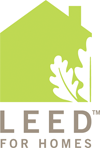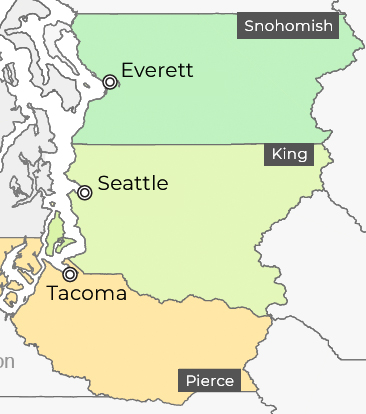

1. market research report
The Cost vs. Value Report produced by Hanley Wood and published by Remodeling Magazine, is the gold standard in our industry and offers invaluable up-to-date data and analysis to help homeowners and professionals make informed decisions.
The report data is subdivided by US Geography (region & city) to make it pertinent for your home and neighborhood. The ‘Seattle area’ report includes the counties of Snohomish, King, and Pierce.
2. videos
![]()
Craig Webb, editor-in-chief of Remodeling Magazine, shares his remodeling insights and expertise in a series of informational videos. We recommend the following titles to support your research.
note: video links open from the Remodeling magazine site
The online publication Remodeling Magazine offers 2 important resources that can support your remodel research.
The report data is subdivided by US Geography (region & city) to make it pertinent for your home and neighborhood. The ‘Seattle area’ report includes the counties of Snohomish, King, and Pierce.
2. videos
![]()
Craig Webb, editor-in-chief of Remodeling Magazine, shares his remodeling insights and expertise in a series of informational videos. We recommend the following titles to support your research.
note: video links open from the Remodeling magazine site
Another helpful resource is the following article by Gail on determining a realistic kitchen remodel estimate. It includes valuable information on Investment levels, Expectations and Industry norms, introduction to the the Home Value Percentage model, and how to Appropriately allocate your Kitchen Investment.
Budget Article by Gail Monica Dent
How to determine a realistic budget for your Dream Kitchen
The most common question I am asked is ‘How much will my kitchen cost?’ Naturally followed by ‘How do I get in all the things I want?’
As a kitchen designer, it is always fun to begin working on the features and functions for a new kitchen project, molding the entire room into a dream kitchen. But I have learned from experience that a new kitchen can only be a true success when client vision and expectation aligns with realistic costs. In this article I will introduce an analytical method to determine a starting point for your remodel investment level, helpful strategies for a positive ROI, and guidelines to create a realistic budget for your Dream Kitchen.
Investment level, Expectations and Industry norms
When you dream of a new kitchen, the wish list is long and the magazine pictures quickly pile up. This is a great place to start and exactly where you should be when initially contacting professionals to consider for your project. But how do you take the next steps to ensure that your wish list is in line with your budget? How much do you plan to invest? What kind of return do you expect from your investment?
As with many price-value decisions there are some standards on which to base your expenditure. I recommend a home value percentage model. Start by determining the current value of your home: for a reasonable kitchen remodel in a mid-range home, plan to spend 10-15% of your home’s current value; for an upscale kitchen, plan on a 15-20% range of your home’s value.
Other factors to consider are how long do you plan to live in the home and what the real estate competition looks like in your neighborhood. It is good to keep in mind that your home is most likely your biggest investment and as such it should be protected. Fortunately, good kitchen remodels traditionally have a high return on investment, while simultaneously giving you the pleasure of family time in the kitchen of your dreams. In general you can plan on an average ROI in the 70-80% range for a well-executed kitchen remodel.

Feature/materials examples using the home value percentage model
A reasonable kitchen design using the 10-15% home value investment model would provide budget for the following:
- Semi-custom cabinetry
- Basic granite or basic quartz (engineered stone) countertops
- GE Café (stainless) or GE Profile (black) appliances (no extras)
- Natural stone, ceramic tile or basic glass tile backsplash
- Under cabinet lighting
- Recessed can ceiling lighting
- Undermount sink (stainless)
- Basic pull-down spray faucet (stainless)
- Cabinet hardware (knobs & pulls)
Using the 15-20% home value range would be adequate for these features and materials in an upscale kitchen design:
- Custom made cabinetry with glazed finishes and specialty storage options, possible dual styles, dual finishes
- Mid-to-high range granite or marble countertops
- Professional appliances (Decor, Sub-Zero, Wolfe, Meile) including extras like wine fridge, espresso maker, steam oven
- Backsplash with handmade tile or specialty tile
- Extensive under cabinet and in-cabinet lighting
- Recessed can ceiling lighting with additional pendant lighting
- Undermount sink (cast iron) with additional prep-sink
- High-end faucets and sink accessories (soap, lotion, air button)
- Designer cabinet hardware
- Extensive wood trim
- TV and computer locations within kitchen
- Possible butler’s pantry
 Green kitchens can give you the personal satisfaction of doing something good for the planet and over time you benefit from reduced energy costs and savings.
Green kitchens can give you the personal satisfaction of doing something good for the planet and over time you benefit from reduced energy costs and savings.
That said, the costs associated with these building standards and materials can range from 4% to 40% above the costs of a standard remodel, and a green kitchen renovation will take more planning. The first step is to assess the range of green materials available to you and the conversion specs for your particular kitchen. It is important to note that materials and appliances that are green or LEED certified are more expensive to acquire.
Percentage of Kitchen Investment by category
Graph categories: Cabinets, Labor, Surfaces, Appliances, Lighting/Plumbing, Other.
Graph does not include Design Fees or sales tax, and makes the assumption project scope is a full gut/replace kitchen remodel, without moving walls, windows, or doors.
| 28% | Cabinets |
| 25% | Labor |
| 18% | Appliances |
| 14% | Surfaces1 |
| 10% | Lighting/Plumbing |
| 5% | Other2 |
1Surfaces include: counters, flooring, backsplash, paint
2Other may include: Replacing doors, windows, trim
Based on the current value of your home, you can determine an appropriate investment range for your kitchen.
Begin your planning with the 10% of home value, you can always lower or raise the percentage of home value in your analysis.
Allocate money across the board for your selections based on the percentages in the chart above. Reference your wish list and compare it to the breakdown.
Take a balanced approach in your planning, especially when trying to add a specialty item or when trying to cut costs — always keep your return in mind. For instance, updating older but quality materials/appliances with new but lesser quality selections may not offer any return or even negative ROI if you plan to stay in your home for another few years and they do not handle the wear and tear gracefully.

Keep in mind that there are 3 primary areas of expense that will impact your overall costs (and that you have control over 2 out of the 3)
- 1. Material Selections
You will have the most control over cost and quality through your selection of appliances, cabinets, counters & flooring - 2. Construction & Installation
The second largest impact on the price is the number of structural changes in walls, plumbing/electrical relocations, island additions, and the installation of your material selections - 3. Geography
Where you live has an impact on all your costs. The cost of construction and to a lesser degree the cost of materials will vary depending upon your geographical location and cost of living index. Unless you want to move, you cannot control these costs.
In conclusion
By using the above information, I hope it will be easier to see where the compromises and tradeoffs can (and should) be made in creating your dream kitchen. Analytical tools can give you the power to modify and shape your kitchen into the best it can be within the investment level you are willing to make. Whether at the $25,000, $50,000 or $100,000 level these practical investment guidelines can help keep you grounded during the planning stage.
With proper planning, a solid analysis of expenditures, a well-blended design, and the engagement of trusted, proven professionals you can have a successful Dream Kitchen, on budget, on time, and on the mark!
references:
NKBA – National Kitchen & Bath Association
Remodeling Cost vs. Value Report 2010-11
HGTV – Start at Home Series


 Award Winning Projects
Award Winning Projects